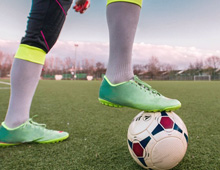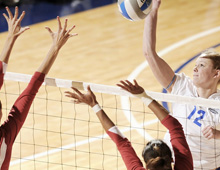How to Choose Knee Support Braces?

Knee braces are devices that provide support, stability, and compression to the knee joint. They can help prevent or treat various knee conditions, such as pain, injury, arthritis, and instability. However, not all knee support braces are created equal. There are different types, features, and sizes of knee braces that suit different needs and preferences. How do you choose the right knee brace for yourself? In this blog post, we will answer some of the most common questions about knee braces and guide you through the process of selecting the best one for you.
What Does a Knee Brace Do?
A knee brace is designed to do one or more of the following functions:
● Protect the knee from further damage or injury. For example, a hinged knee brace can limit the range of motion of the knee and prevent it from twisting or bending excessively. A post-operative knee brace can immobilize the knee after surgery and protect the healing tissues.
● Support the knee and improve its stability. For example, a patellar stabilizing knee brace can keep the kneecap in place and prevent it from slipping out of alignment. A ligament knee brace can reinforce the ligaments and prevent them from tearing or stretching.
● Compress the knee and reduce swelling, inflammation, and pain. For example, a sleeve knee brace can apply gentle pressure to the knee and increase blood circulation. A wraparound knee brace can adjust the level of compression and provide customized relief.
Why and How Do Knee Braces Work for Knee Pain, Injury and Instability?
Knee pain, injury and instability are common problems that affect many people. They can be caused by various factors, such as overuse, trauma, aging, disease, or congenital defects. Some of the most common knee conditions include:
● Osteoarthritis
A degenerative condition that causes the cartilage in the knee to wear away, resulting in bone-on-bone friction, pain, stiffness, and reduced mobility.
● Rheumatoid arthritis
An autoimmune condition that causes the immune system to attack the synovial membrane in the knee, resulting in inflammation, pain, swelling, and joint damage.
● Meniscus tear
A tear in the cartilage that cushions the knee, resulting from a sudden twist or impact, or from gradual wear and tear. It can cause pain, swelling, locking, and instability of the knee.
● Anterior cruciate ligament (ACL) injury
A tear or sprain in the ligament that connects the thigh bone to the shin bone, resulting from a sudden change in direction, landing, or stopping. It can cause pain, swelling, instability, and loss of function of the knee.
● Patellofemoral pain syndrome (PFPS)
A condition that causes pain in the front of the knee, resulting from the kneecap rubbing against the thigh bone. It can be caused by overuse, muscle imbalance, misalignment, or injury. It can cause pain, stiffness, and difficulty in activities that involve bending the knee.
Knee braces work for knee pain, injury and instability by providing the following benefits:
● Reducing pain
Knee support braces can reduce pain by compressing the knee, increasing blood flow, and releasing endorphins. They can also reduce pain by protecting the knee from further damage, supporting the knee structures, and correcting the knee alignment.
● Improving function
Knee pad braces can improve function by allowing the knee to move in a controlled and safe manner. They can also improve function by enhancing the knee stability, strength, and balance.
● Promoting healing
Knee braces can promote healing by creating a favorable environment for the knee tissues to repair and regenerate. They can also promote healing by preventing or reducing inflammation, swelling, and infection.
When to Wear a Knee Brace
The decision to wear a knee brace depends on several factors, such as:
● The type and severity of your knee condition: Some knee conditions may require wearing a knee brace as part of the treatment plan, while others may not. For example, if you have a mild knee sprain, you may only need to wear a knee brace for a few days or weeks until the symptoms subside. However, if you have a severe knee injury, such as an ACL tear, you may need to wear a knee brace for several months or even longer until the injury heals or you undergo surgery.
● The purpose and goal of wearing a knee brace: You may have different reasons and objectives for wearing a knee brace, such as preventing injury, reducing pain, improving function, or promoting healing. For example, if you want to prevent injury, you may wear a knee brace before engaging in activities that put stress on your knee, such as sports, exercise, or work. However, if you want to promote healing, you may wear a knee brace after an injury or surgery to protect and support your knee.
● The advice and recommendation of your doctor or physical therapist: Your doctor or physical therapist can help you determine whether you need to wear a knee brace, what type of knee brace to wear, how long to wear it, and how to use it properly. They can also monitor your progress and adjust your treatment plan accordingly. Therefore, you should always consult your doctor or physical therapist before wearing a knee brace.
How to Choose the Right Knee Brace for Yourself
Choosing the right knee brace for yourself can be a challenging task, as there are many factors to consider, such as:
● Identify what you are trying to achieve: You should have a clear idea of what you want to accomplish by wearing a knee brace, such as preventing injury, reducing pain, improving function, or promoting healing. This will help you narrow down your options and select the most suitable knee brace for your needs.
● Identify the level of pain or injury: You should also assess the severity of your pain or injury, as this will affect the type and level of support you need from a knee brace. For example, if you have mild pain or injury, you may only need a basic knee brace that provides compression and warmth. However, if you have moderate to severe pain or injury, you may need a more advanced knee brace that provides stability and protection.
● Patient’s Guide to Knee Brace Support: To help you choose the right knee brace for yourself, you can use the following guide to compare the different types and levels of support offered by different knee braces:
Type of Knee Brace
Apart from the type and level of support, you should also look for the following features when choosing a knee brace:
● Slip-On Braces
These are knee braces that you can simply slip on over your knee, like a sock or a sleeve. They are usually made of elastic or neoprene materials that provide compression and warmth to the knee. They are easy to use and comfortable to wear, but they may not provide enough support or stability for more serious knee conditions.
● Hinged Knee Braces
These are knee braces that have metal or plastic hinges on the sides of the knee that limit the range of motion and prevent excessive bending or twisting of the knee. They are usually made of rigid or semi-rigid materials that provide stability and protection to the knee. They are more suitable for moderate to severe knee conditions, such as ligament injuries or arthritis, but they may be bulky, heavy, or restrictive to wear.
● Wrap Around Knee Braces
These are knee braces that you can wrap around your knee and secure with Velcro, straps, or buckles. They are usually made of flexible or semi-flexible materials that provide compression and adjustability to the knee. They are more versatile and customizable than slip-on braces, but they may not provide enough stability or protection for more serious knee conditions.
● Bands/Straps Knee Braces
These are knee braces that consist of bands or straps that apply pressure to specific points on the knee, such as the patellar tendon or the iliotibial band. They are usually made of elastic or neoprene materials that provide relief and support to the knee. They are more targeted and effective for specific knee conditions, such as patellar tendinitis or iliotibial band syndrome, but they may not address the whole knee problem or prevent further injury.
● Open vs Closed Knee Braces
These are knee braces that differ in the design of the front part of the knee brace, where the kneecap is located. Open knee braces have a hole or a cut-out in the front that exposes the kneecap, while closed knee braces have a solid or a padded front that covers the kneecap. Open knee braces are more breathable and allow more movement of the kneecap, while closed knee braces are more protective and provide more compression to the kneecap.
● Custom Knee Braces
These are knee braces that are specially made to fit your individual knee shape, size, and condition. They are usually made of high-quality materials that provide optimal support, stability, and comfort to the knee. They are more expensive and require more time to make than off-the-shelf knee braces, but they may offer better results and satisfaction for your specific knee problem.
Features of a High Quality Knee Brace
Apart from the type and level of support, you should also look for the following features when choosing a knee brace:
● Comfort and Breathability
A high quality knee brace should be comfortable to wear and breathable to prevent sweating and irritation. It should fit snugly but not too tightly, and it should not cause any chafing, rubbing, or pinching. It should also be made of soft and durable materials that can withstand wear and tear.
● Lightweight and Streamlined Design
A high quality knee brace should be lightweight and streamlined to allow easy and natural movement of the knee. It should not be bulky or heavy, and it should not interfere with your clothing or footwear. It should also be easy to put on and take off, and it should not require any tools or assistance.
● Adjustability and Customization
A high quality knee brace should be adjustable and customizable to fit your individual needs and preferences. It should have features such as straps, buckles, Velcro, or laces that allow you to adjust the tightness, fit, and position of the knee brace. It should also have features such as hinges, pads, or splints that allow you to modify the level of support, stability, and protection of the knee brace.
How to Choose the Correct Knee Brace Size
Choosing the correct knee brace size is crucial for ensuring the effectiveness and comfort of the knee brace. A knee brace that is too small or too large can cause problems such as slipping, sliding, bunching, or cutting off circulation. To choose the correct knee brace size, you should follow these steps:
● Measure your knee circumference
You should measure the circumference of your knee at the widest point, which is usually just below the kneecap. You can use a flexible tape measure or a string and a ruler to do this. You should measure your knee while standing and with your leg slightly bent.
● Compare your measurement with the size chart
You should compare your measurement with the size chart provided by the manufacturer or seller of the knee brace. You should choose the size that matches or is closest to your measurement. If your measurement falls between two sizes, you should choose the larger size for more comfort or the smaller size for more support. However, you should also consider your comfort level and personal preference when choosing the size.
● Try on the knee brace and adjust it as needed
You should try on the knee brace and see how it feels on your knee. You should make sure that the knee brace is not too loose or too tight, and that it does not cause any discomfort or pain. You should also check that the knee brace is properly aligned and positioned on your knee. You can use the features such as straps, buckles, Velcro, or laces to adjust the knee brace as needed.
How Tight Should a Knee Brace Be?
A knee brace should be tight enough to provide adequate support and compression to the knee, but not so tight that it restricts blood flow, causes numbness, tingling, or pain, or damages the skin or tissues. A good way to test the tightness of a knee brace is to insert two fingers between the knee brace and your skin. If you can easily slide your fingers in and out, the knee brace is too loose. If you cannot insert your fingers at all, the knee brace is too tight. If you can insert your fingers with some resistance, the knee brace is just right.
How Often Should You Wear a Knee Brace?
The frequency and duration of wearing a knee brace depend on several factors, such as:
● The type and severity of your knee condition
Some knee conditions may require wearing a knee brace more often or longer than others. For example, if you have a chronic knee condition, such as osteoarthritis, you may need to wear a knee brace every day or most of the time. However, if you have an acute knee condition, such as a sprain, you may only need to wear a knee brace for a few days or weeks until the symptoms subside.
● The purpose and goal of wearing a knee brace
You may have different reasons and objectives for wearing a knee brace, such as preventing injury, reducing pain, improving function, or promoting healing. For example, if you want to prevent injury, you may wear a knee brace only when engaging in activities that put stress on your knee, such as sports, exercise, or work. However, if you want to promote healing, you may wear a knee brace more frequently or continuously to protect and support your knee.
● The advice and recommendation of your doctor or physical therapist
Your doctor or physical therapist can help you determine how often and how long you should wear a knee brace, based on your condition and goals. They can also monitor your progress and adjust your treatment plan accordingly. Therefore, you should always follow the instructions and guidelines given by your doctor or physical therapist when wearing a knee brace.
Benefits and Limitations of Knee Braces
Knee braces can offer many benefits for people with knee pain, injury, or instability, such as:
● Reducing pain
Knee braces can reduce pain by compressing the knee, increasing blood flow, and releasing endorphins. They can also reduce pain by protecting the knee from further damage, supporting the knee structures, and correcting the knee alignment.
● Improving function
Knee braces can improve function by allowing the knee to move in a controlled and safe manner. They can also improve function by enhancing the knee stability, strength, and balance.
● Promoting healing
Knee braces can promote healing by creating a favorable environment for the knee tissues to repair and regenerate. They can also promote healing by preventing or reducing inflammation, swelling, and infection.
However, knee braces also have some limitations and drawbacks, such as:
● Not addressing the root cause
Knee braces can only provide symptomatic relief and temporary support to the knee, but they cannot address the underlying cause of the knee problem, such as muscle weakness, joint degeneration, or biomechanical issues. Therefore, knee braces should not be used as a substitute for proper diagnosis and treatment of the knee condition.
● Causing dependence or overuse
Knee braces can sometimes cause dependence or overuse, as some people may rely too much on the knee brace and neglect other aspects of their treatment, such as exercise, medication, or surgery. This can lead to worsening of the knee condition, loss of muscle strength, or reduced joint mobility. Therefore, knee braces should be used as an adjunct to, not a replacement for, other forms of treatment.
● Causing discomfort or complications
Knee braces can sometimes cause discomfort or complications, such as skin irritation, rash, allergy, infection, or nerve damage. This can happen if the knee brace is not fitted, worn, or cleaned properly, or if the knee brace is not suitable for the person or the condition. Therefore, knee braces should be chosen, used, and maintained carefully and correctly.
Conclusion
Knee braces are devices that provide support, stability, and compression to the knee joint. They can help prevent or treat various knee conditions, such as pain, injury, arthritis, and instability. However, not all knee braces are created equal. There are different types, features, and sizes of knee braces that suit different needs and preferences. To choose the right knee brace for yourself, you should consider the following factors:
● What you are trying to achieve by wearing a knee brace
● The level of pain or injury you have
● The type and level of support you need
● The features of a high quality knee brace
● The correct knee brace size and fit
● The frequency and duration of wearing a knee brace
● The benefits and limitations of knee braces
You should also consult your doctor or physical therapist before wearing a knee brace, as they can help you determine whether you need a knee brace, what type of knee brace to wear, how to use it properly, and how to monitor your progress. Remember, knee braces are not a magic solution for your knee problems. They are only one part of your treatment plan, and they should be used in conjunction with other forms of treatment, such as exercise, medication, or surgery. By choosing and using the right knee brace for yourself, you can improve your knee condition and enjoy a better quality of life.
Cooperation
The above is the relevant introduction and information of Zhongzhi Health, if you need customized sports protective gears, you can contact us. We look forward to cooperating with you to achieve long-term, valuable and win-win cooperation.











